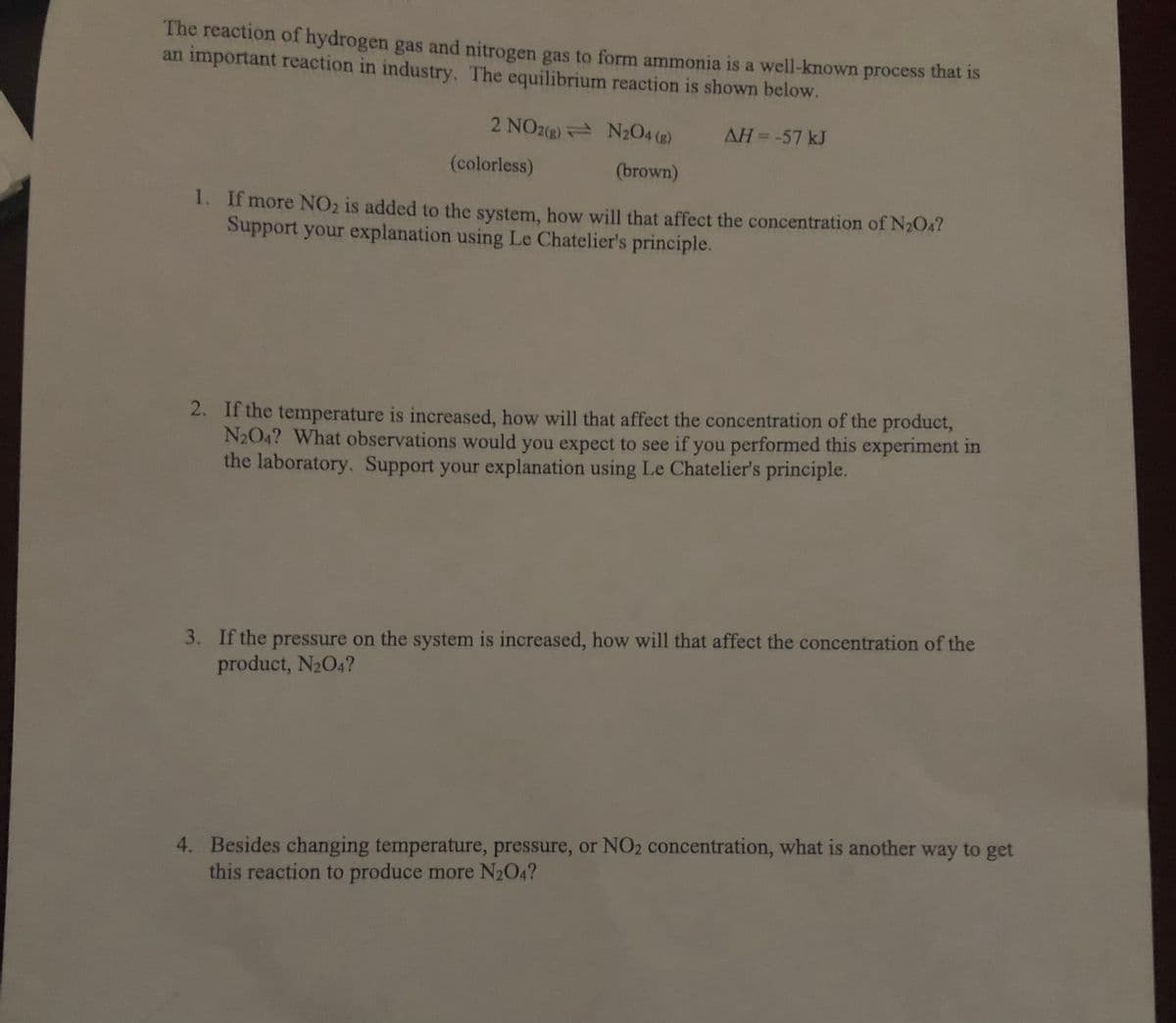The reaction of hydrogen gas and nitrogen gas to form ammonia is a well-known process that is an important reaction in industry. The equilibrium reaction is shown below. 2 NO2) N2O4 (2) AH=-57 kJ (colorless) (brown) 1. If more NO2 is added to the system, how will that affect the concentration of N204? Support your explanation using Le Chatelier's principle. 2. If the temperature is increased, how will that affect the concentration of the product, N204? What observations would you expect to see if you performed this experiment in the laboratory. Support your explanation using Le Chatelier's principle. 3. If the pressure on the system is increased, how will that affect the concentration of the product, N2O4? 4. Besides changing temperature, pressure, or NO2 concentration, what is another way to get this reaction to produce more N204?
Thermochemistry
Thermochemistry can be considered as a branch of thermodynamics that deals with the connections between warmth, work, and various types of energy, formed because of different synthetic and actual cycles. Thermochemistry describes the energy changes that occur as a result of reactions or chemical changes in a substance.
Exergonic Reaction
The term exergonic is derived from the Greek word in which ‘ergon’ means work and exergonic means ‘work outside’. Exergonic reactions releases work energy. Exergonic reactions are different from exothermic reactions, the one that releases only heat energy during the course of the reaction. So, exothermic reaction is one type of exergonic reaction. Exergonic reaction releases work energy in different forms like heat, light or sound. For example, a glow stick releases light making that an exergonic reaction and not an exothermic reaction since no heat is released. Even endothermic reactions at very high temperature are exergonic.

Trending now
This is a popular solution!
Step by step
Solved in 2 steps with 2 images









